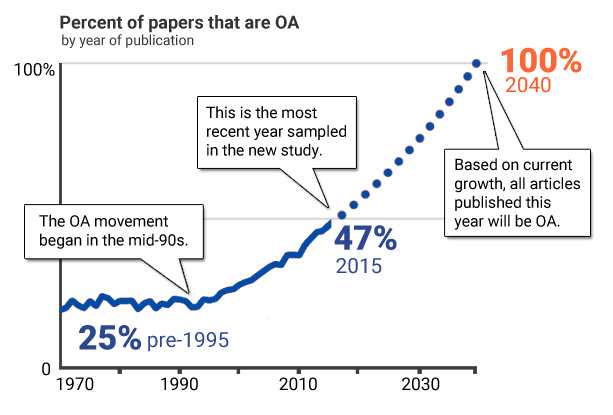Reposted with minor editing from a response Jason gave on the Global Open Access mailing list, July 12 2018.
We’re often asked: How do we know Unpaywall won’t be acquired? What makes Unpaywall (and the company behind it, Impactstory) different than Bepress, SSRN, Mendeley, Publons, Kopernio, etc?
How can we be sure you won’t be bought by someone whose values don’t align with open science?
There are no credible guarantees I can offer that this won’t happen, and nor can any other organization. However, I think stability in the values and governance of Impactstory is a relatively safe bet. Here’s why (note: I’m not a lawyer and the below isn’t legal advice, obvs):
We’re incorporated as a 501(c)3 nonprofit. This was not true of recently-acquired open science platforms like Mendeley, SSRN, and Bepress, which were all for-profits. We think that’s fine…the world needs for-profits. But we sure weren’t surprised when any of them were acquired. These are for-profit companies, which means they are, er:
For: Profit.
Legally, their purpose is profit. They may benefit the world in many additional ways, but their officers and board have a fiduciary duty to deliver a return to investors.
Our officers and board, on the other hand, have a legal fiduciary duty to fulfill our nonprofit mission, even where this doesn’t make much money. I think instead of “nonprofit” it should be called for-mission. Mission is the goal. That can be a big difference. Jefferson Pooley did a great job articulating the value of the nonprofit structure for scholcomm organizations in more detail in a much-discussed LSE Impact post last year.
All that said, I’m not going to sit here and tell you nonprofits can’t be acquired…cos although that may be technically true, nonprofits can still be, in all-but-name, acquired. It’s just less common and harder.
So we like to also emphasize that the source code for these projects we are doing is open. That means that for any given project, its main asset–the code that makes our project work–is available for free to anyone who wants it. This makes us much less of an acquisition target. Why buy the cow when the code is free, as it were.
As a 501(c)3 nonprofit, we have a board of directors that helps keep us accountable and helps provide leadership to the organization as well. Past board members have included Cameron Neylon and John Wilbanks, with a current board of me, Heather, Ethan White and Heather Joseph. Heather, Ethan, John, and Cameron have each contributed mightily to the Open cause, in ways that would take me much longer than I have to fully chronicle (and most of you probably know anyway). We’re incredibly proud to have (and have had) them tirelessly working to help Impactstory stay on the right course. We think they are people that can be trusted.
Finally, and y’all can make up your own minds about this, I like to think our team has built up some credibility in the space. Me and Heather have both been working entirely on open-source, open science projects for the last ten years, and most of that work’s pretty easy to find if you want to check it out. In that time, it’s safe to assume we’ve turned down some better-paying projects that aligned less closely with the open science mission.
So, being acquired? Not in our future. But growth sure is, through grants and partnerships and customer relationships and lots of hard work… all in the service of making scholcomm more open. Stay tuned 🙂











